
Radiation Oncology
Scope & Guideline
Empowering oncology with open access to groundbreaking research.
Introduction
Aims and Scopes
- Clinical Effectiveness and Outcomes Research:
The journal prioritizes studies that assess the effectiveness of various radiation therapy techniques, including comparisons of treatment modalities, patient outcomes, and quality of life metrics. - Technological Innovations in Radiation Therapy:
Research on emerging technologies, such as MRI-guided radiation therapy, proton therapy, and advanced imaging techniques, is a core focus area, facilitating improvements in treatment precision and patient safety. - Personalized and Adaptive Radiation Treatment Planning:
The journal emphasizes the development of personalized treatment plans and adaptive radiation therapy approaches that take into account individual patient characteristics and tumor biology. - Pediatric Radiation Oncology:
Recognizing the unique challenges in treating pediatric patients, the journal includes research focused on radiation therapy protocols, outcomes, and techniques tailored for children. - Integration of Systemic Therapies and Radiation:
Studies exploring the combination of radiation therapy with systemic therapies, such as immunotherapy and targeted therapies, are vital to understanding synergistic effects and improving patient outcomes. - Health Disparities and Access to Care:
The journal seeks to address healthcare disparities in radiation oncology, examining factors that affect access to treatment across diverse populations. - Quality Assurance and Safety in Radiation Therapy:
Research aimed at improving safety protocols, quality assurance measures, and risk management strategies in radiation therapy practices is a significant area of focus.
Trending and Emerging
- Artificial Intelligence and Machine Learning Applications:
There is a growing trend in the use of AI and machine learning to enhance radiation therapy planning, automate contouring, and predict patient outcomes, indicating a shift towards data-driven approaches in clinical practice. - Patient-Reported Outcomes and Quality of Life Assessments:
An increasing emphasis on patient-reported outcomes and quality of life studies reflects a broader trend in healthcare towards prioritizing patient experience and satisfaction in treatment evaluations. - Hypofractionated and Ultra-Hypofractionated Radiation Therapy:
The adoption of hypofractionated and ultra-hypofractionated treatment regimens is on the rise, driven by evidence suggesting comparable or improved outcomes with reduced treatment times. - Integration of Telehealth in Radiation Oncology:
The COVID-19 pandemic has accelerated the integration of telehealth practices in radiation oncology, with increasing research on virtual consultations and remote monitoring of patients. - Focus on Health Disparities and Access to Radiation Therapy:
Emerging themes include a focus on addressing disparities in cancer care, with research aimed at understanding and improving access to radiation therapy for underrepresented and disadvantaged populations. - Multidisciplinary Approaches to Cancer Treatment:
There is a notable trend towards interdisciplinary collaboration, with studies exploring the integration of radiation therapy with surgical, medical, and supportive care to optimize patient outcomes.
Declining or Waning
- Traditional Radiation Techniques:
There has been a noticeable decrease in studies focusing on conventional radiation techniques, such as 2D and 3D conformal radiation therapy, as the field increasingly shifts towards more advanced modalities like IMRT and proton therapy. - Basic Science and Preclinical Studies:
Research articles centered on basic science and preclinical findings related to radiation effects on cellular and molecular levels have become less frequent, with a greater focus now on clinical applications and patient-centered outcomes. - Radiation Therapy Alone Without Concurrent Treatments:
The frequency of studies examining radiation therapy in isolation, without concurrent systemic treatments or multimodal approaches, has declined, reflecting a trend towards integrated treatment strategies. - Historical Perspectives and Case Reports:
The publication of historical analyses and case reports has waned, as the journal increasingly prioritizes larger cohort studies and data-driven research that can provide robust evidence for clinical practices. - Generalized Population Studies:
Research focusing on generalized population trends in radiation therapy usage has decreased, as there is a growing emphasis on personalized medicine and targeted studies that address specific patient demographics or conditions.
Similar Journals
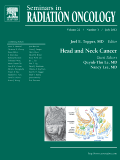
SEMINARS IN RADIATION ONCOLOGY
Exploring the Future of Radiation TherapySEMINARS IN RADIATION ONCOLOGY is a premier journal published by W B SAUNDERS CO-ELSEVIER INC, dedicated to advancing the field of radiation oncology through high-quality research and comprehensive reviews. With an impressive impact factor and a notable HIndex, this journal holds a prominent place within the academic community, particularly illustrated by its Q2 ranking in both Cancer Research and Oncology, and a Q1 ranking in Radiology, Nuclear Medicine, and Imaging as of 2023. Since its inception in 1991, the journal has served as a vital resource for researchers, clinicians, and healthcare professionals, facilitating the exchange of innovative ideas and practices that shape the future of cancer treatment. While the journal is not open access, it offers essential insights into the latest advancements in the field, catering to a diverse audience eager to expand their knowledge and improve patient outcomes in the realm of radiation therapy.

Advances in Radiation Oncology
Transforming Research into Radiotherapy InnovationsAdvances in Radiation Oncology, published by Elsevier Inc, is a premier international journal dedicated to the field of oncology and radiology, focusing on the latest groundbreaking research and innovations in radiation therapy. Launched as an Open Access journal in 2016, it has since carved out a significant niche in the academic community, featuring contributions that span a diverse range of topics including clinical practices, technologies, and outcomes in radiation oncology. With an impressive Q2 rankingOncology and Radiology, Nuclear Medicine and Imaging categories for 2023, and positioned within the 65th and 55th percentiles of Scopus ranks, it serves as an essential resource for researchers, medical professionals, and students alike. The journal not only emphasizes the importance of disseminating knowledge widely through its open access model but also aims to foster collaboration and innovation in the evolving landscape of cancer treatment. For those looking to stay at the forefront of radiotherapy research and advancements, Advances in Radiation Oncology is an invaluable platform for scholarly communication.
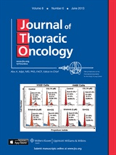
Journal of Thoracic Oncology
Pioneering Research for a Healthier TomorrowJournal of Thoracic Oncology, published by Elsevier Science Inc, is a premier scholarly outlet dedicated to advancing the field of thoracic oncology. With an impressive impact factor and consistently rated in the Q1 quartile across several pertinent categories such as Medicine, Oncology, and Pulmonary and Respiratory Medicine, this journal stands at the forefront of research dissemination. Covering a broad scope that includes innovative therapeutic approaches, clinical trials, and the molecular underpinnings of thoracic malignancies, the journal serves as a vital resource for researchers, healthcare professionals, and students seeking to enhance their understanding of thoracic cancer and its treatment. With publication dates converging from 2006 to 2024, the Journal of Thoracic Oncology fosters a collaborative scholarly community by providing a platform for high-quality research while ensuring accessibility through traditional publication formats. Positioned in the heart of New York City, this journal not only reflects the cutting-edge advancements in oncology but also plays a pivotal role in shaping the future of thoracic cancer care.

Translational Oncology
Bridging Research and Patient Care in OncologyTranslational Oncology is a premier open access journal published by Elsevier Science Inc, dedicated to the rapidly evolving field of cancer research and oncology. Since its inception in 2008, the journal has been a vital platform for the dissemination of innovative research and findings that bridge the gap between laboratory discoveries and clinical applications. With an impressive impact factor and ranked Q2 in Cancer Research and Q1 in Oncology, it occupies a prominent position in the academic landscape, helping to shape the future of cancer therapeutics and patient care. The journal offers valuable insights across a diverse array of topics, including molecular biology, genetic factors in cancer, and innovative treatment strategies, ensuring relevance and engagement for its readership. As it converges toward 2024, Translational Oncology continues to attract a global audience of researchers, healthcare professionals, and students committed to advancing our understanding of cancer and enhancing clinical outcomes.

Physics & Imaging in Radiation Oncology
Innovating Research to Illuminate the Path of Radiation OncologyPhysics & Imaging in Radiation Oncology is a premier journal dedicated to advancing the interdisciplinary field of radiation oncology through innovative research and imaging technologies. Published by Elsevier, this open-access journal has made its mark since its inception in 2017, ensuring that groundbreaking findings are accessible to a broad audience. With a strong focus on the integration of physics, imaging techniques, and oncology, the journal occupies esteemed positions in the academic landscape, ranking in the top quartile for Radiation and Radiology, Nuclear Medicine and Imaging as of 2023. The journal serves as a platform for researchers, professionals, and students to share insights and foster collaboration, ultimately improving patient outcomes through enhanced imaging and treatment modalities. Based in Ireland and operating from Radarweg 29, 1043 NX Amsterdam, Netherlands, the journal aims to bridge the gap between theoretical physics and practical applications in clinical settings.
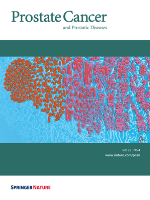
PROSTATE CANCER AND PROSTATIC DISEASES
Connecting research and practice for prostate health.PROSTATE CANCER AND PROSTATIC DISEASES, published by SpringerNature, is a prestigious international journal dedicated to advancing knowledge in the fields of cancer research, oncology, and urology, as evidenced by its Q1 rankings in 2023. Established in 1997, this journal has become a vital resource for researchers, clinicians, and healthcare professionals, offering impactful research and clinical insights on prostate health and disease. With its focus on innovative studies and comprehensive reviews, it addresses critical challenges in the management and treatment of prostate cancer, driving improvements in patient care globally. The journal's standing is further supported by its impressive Scopus rankings, placing it in the top tier of its categories. Readers can access high-quality, peer-reviewed articles that contribute significantly to ongoing medical practices and improve therapeutic strategies for prostate-related health issues.
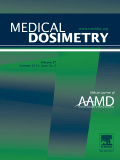
Medical Dosimetry
Pioneering Research in Medical Radiation ApplicationsMedical Dosimetry is a distinguished journal published by Elsevier Science Inc, dedicated to the advancing field of medical dosimetry and its applications within oncology, radiology, and nuclear medicine. With its ISSN 0958-3947 and E-ISSN 1873-4022, this journal serves as a crucial resource for researchers and professionals aiming to enhance their understanding of radiation treatment planning and dosage calculations. Encompassing a comprehensive range of topics from clinical dosimetry to technology assessment, Medical Dosimetry has been disseminating significant findings since its establishment in 1988, contributing to the continuous development of best practices in patient care and safety. The journal currently holds a Q3 ranking in various categories, reflecting its pivotal role in the research community, while not currently offering open access, it remains an essential reference for scholars advancing the techniques utilized in medical imaging and treatment. By fostering a platform for high-quality research, it aims to bridge the gap between theoretical studies and clinical applications, making it a vital addition to any medical library.
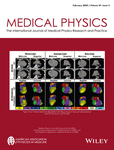
MEDICAL PHYSICS
Championing Excellence in Medical Physics ScholarshipMEDICAL PHYSICS, published by WILEY, stands as a leading journal in the fields of biophysics, medicine, and radiology, boasting an impressive impact factor and classified within the prestigious Q1 category across multiple relevant domains. With its ISSN 0094-2405 and E-ISSN 2473-4209, the journal has been a vital resource since its inception in 1974, leading the discourse well into 2024. Hailing from the United States, MEDICAL PHYSICS serves a diverse academic audience, comprising researchers, clinicians, and students eager to engage with the latest advancements and methodologies. The journal’s authoritative presence is underscored by its Scopus rankings, placing it among the top percentile in both Medicine and Biophysics, marking it as an essential scholarly platform for innovative research and critical reviews. While not currently an Open Access journal, its commitment to curating high-quality articles ensures that readers can access groundbreaking insights into medical imaging, treatment protocols, and the theoretical underpinnings of medical physics. Explore the intersection of technology and healthcare through the esteemed pages of MEDICAL PHYSICS.
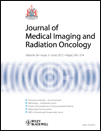
Journal of Medical Imaging and Radiation Oncology
Connecting Scholars to Revolutionize Medical Imaging PracticesJournal of Medical Imaging and Radiation Oncology, published by WILEY, is a pivotal resource in the fields of oncology and medical imaging. With an impact factor reflective of its commitment to advancing research, the journal has maintained a robust reputation since its inception in 2008 and continues to thrive through 2024. It is indexed with an insightful ranking, with a Q2 classification in Radiology, Nuclear Medicine and Imaging, affirming its importance in these disciplines. This journal not only serves as an open access platform, allowing extensive reach and accessibility, but also fosters a scholarly community dedicated to the innovation of imaging techniques and radiation oncology practices. As a key player in disseminating crucial findings and advancements, it appeals to researchers, clinicians, and students who aim to contribute to the evolving landscape of medical imaging and cancer treatment methodologies. The journal is based in Australia, at 111 River St, Hoboken, NJ, and invites submissions that push the boundaries of current knowledge in this critical area of healthcare.
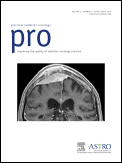
Practical Radiation Oncology
Advancing the Frontiers of Radiation OncologyPractical Radiation Oncology is a premier journal published by Elsevier Science Inc., focusing on the critically important fields of Oncology and Radiology, Nuclear Medicine, and Imaging. With an ISSN of 1879-8500, this journal serves as an essential resource for professionals and researchers dedicated to advancing the practice and research of radiation oncology. Established in 2011 and continuing through 2024, it has quickly gained recognition, achieving a prestigious Q2 ranking in Oncology and an exceptional Q1 ranking in Radiology, Nuclear Medicine, and Imaging as of 2023. The journal, housed in New York, USA, provides a platform for innovative research and practical insights, aimed at enhancing therapeutic practices and improving patient outcomes. As part of its commitment to fostering scientific dialogue, it also features a range of articles, reviews, and clinical studies that cater to the diverse interests of its readers. Hard-copy availability combined with digital access ensures a broad reach for the latest advancements in the field.